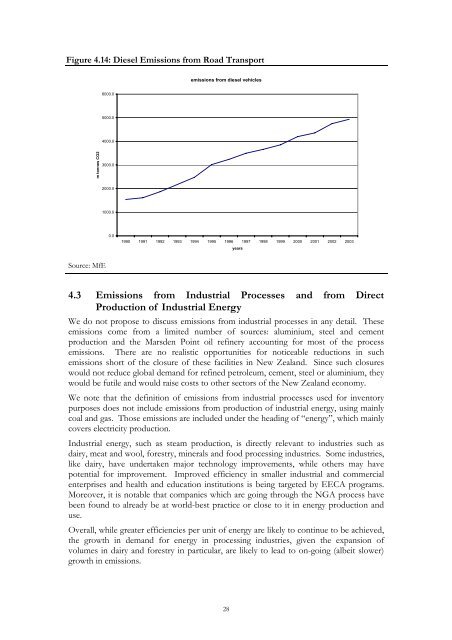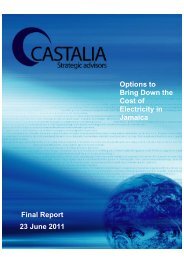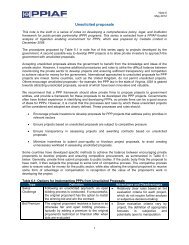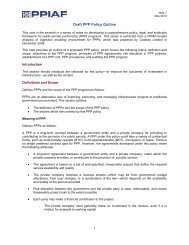Greenhouse Gas Emission Policies Is There a Way ... - Castalia
Greenhouse Gas Emission Policies Is There a Way ... - Castalia
Greenhouse Gas Emission Policies Is There a Way ... - Castalia
Create successful ePaper yourself
Turn your PDF publications into a flip-book with our unique Google optimized e-Paper software.
Figure 4.14: Diesel <strong>Emission</strong>s from Road Transport<br />
emissions from diesel vehicles<br />
6000.0<br />
5000.0<br />
4000.0<br />
m tonnes CO2<br />
3000.0<br />
2000.0<br />
1000.0<br />
0.0<br />
1990 1991 1992 1993 1994 1995 1996 1997 1998 1999 2000 2001 2002 2003<br />
years<br />
Source: MfE<br />
4.3 <strong>Emission</strong>s from Industrial Processes and from Direct<br />
Production of Industrial Energy<br />
We do not propose to discuss emissions from industrial processes in any detail. These<br />
emissions come from a limited number of sources: aluminium, steel and cement<br />
production and the Marsden Point oil refinery accounting for most of the process<br />
emissions. <strong>There</strong> are no realistic opportunities for noticeable reductions in such<br />
emissions short of the closure of these facilities in New Zealand. Since such closures<br />
would not reduce global demand for refined petroleum, cement, steel or aluminium, they<br />
would be futile and would raise costs to other sectors of the New Zealand economy.<br />
We note that the definition of emissions from industrial processes used for inventory<br />
purposes does not include emissions from production of industrial energy, using mainly<br />
coal and gas. Those emissions are included under the heading of “energy”, which mainly<br />
covers electricity production.<br />
Industrial energy, such as steam production, is directly relevant to industries such as<br />
dairy, meat and wool, forestry, minerals and food processing industries. Some industries,<br />
like dairy, have undertaken major technology improvements, while others may have<br />
potential for improvement. Improved efficiency in smaller industrial and commercial<br />
enterprises and health and education institutions is being targeted by EECA programs.<br />
Moreover, it is notable that companies which are going through the NGA process have<br />
been found to already be at world-best practice or close to it in energy production and<br />
use.<br />
Overall, while greater efficiencies per unit of energy are likely to continue to be achieved,<br />
the growth in demand for energy in processing industries, given the expansion of<br />
volumes in dairy and forestry in particular, are likely to lead to on-going (albeit slower)<br />
growth in emissions.<br />
28










